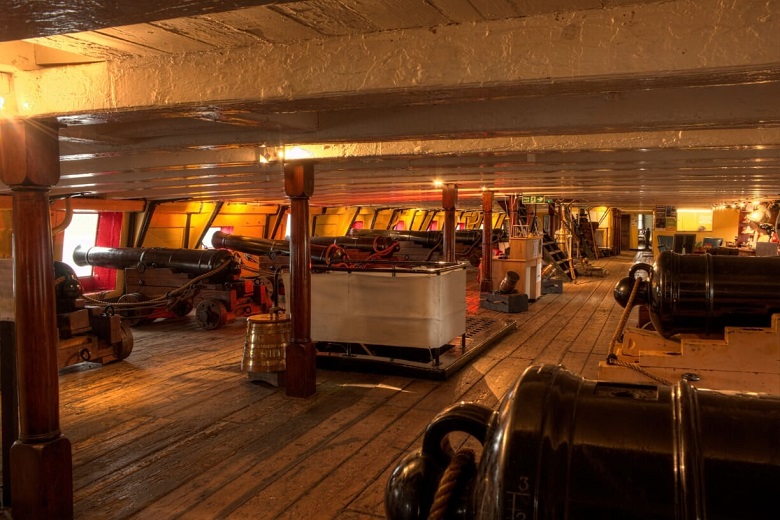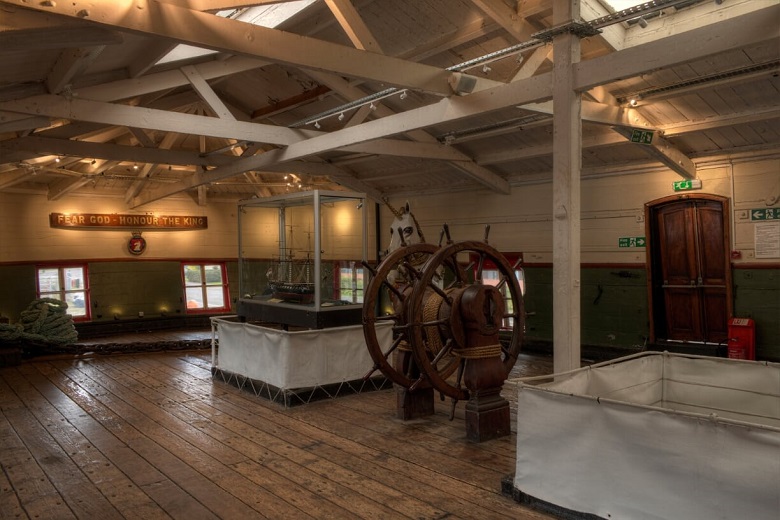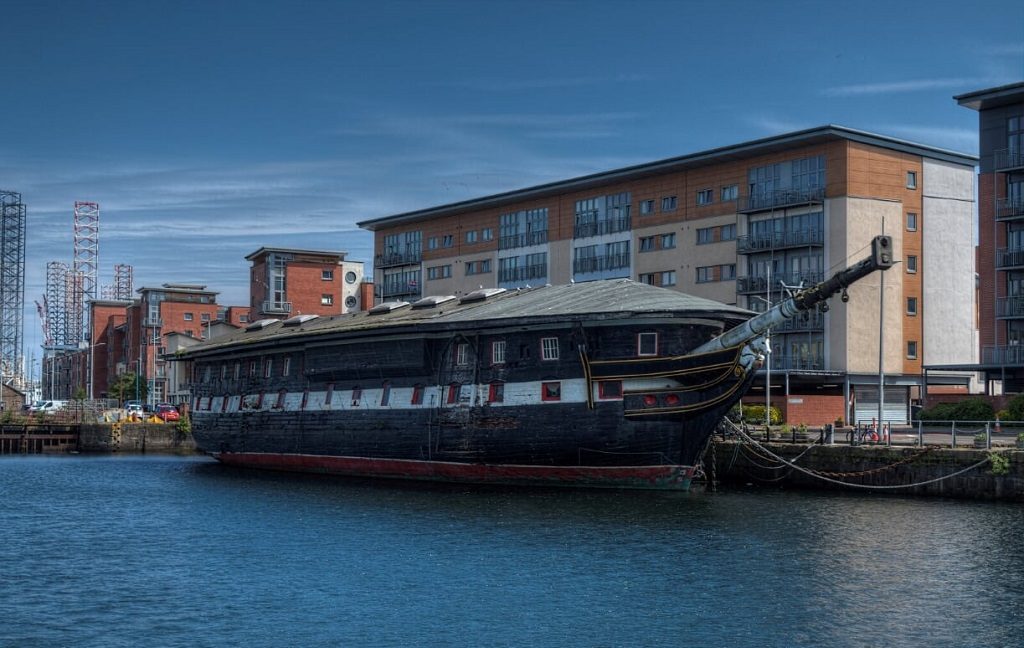Happy National Unicorn Day! What better opportunity to celebrate Scotland’s national animal and the country’s oldest ship, HMS Unicorn?
HMS Unicorn is a remarkable survivor with a unique story to tell. Launched 196 years ago last month, Unicorn is a rather special ship with an impressive and curious history.
A rare survivor
The Unicorn, of 40 guns, from Chatham Dock-yard on the 30th of last month; she is ordered to be docked, to be coppered, and put in a state of ordinary.
Public Ledger and Daily Advertiser, 8 April 1824
Ordered on 21st July 1817 and laid down in February 1822 on No. 4 slipway, Chatham Royal Dockyard, HMS Unicorn is a Leda-class frigate. She was launched on 30th March 1824.

Unicorn’s rare rounded stern (Image courtesy of The Unicorn Preservation Society)
In all, forty-seven Leda-class frigates were built between 1805 and 1832. They were intended as fast and powerful vessels. With a typical speed of 13 knots, they were perfect for patrol missions, trade escort and supporting the fleet’s ‘line-of-battle’ ships.
Very few survived into the 20th century. Out of the forty-seven only two remain today: HMS Trincomalee (1817) in Hartlepool, and HMS Unicorn.
Guns, wood and iron
As a ‘fifth-rate’ frigate, denoted according to the number of guns aboard, HMS Unicorn possessed 46 guns in total. A ‘first-rate’ ship would have had over one hundred.

The gun deck on HMS Unicorn (Image courtesy of The Unicorn Preservation Society)
Designed by Sir Robert Seppings (Surveyor of the Navy between 1813 and 1832) and built during the Industrial Revolution, Unicorn is a unique example of the transition from wooden warship to iron.
Consequently, she has a number of exceptionally unique features including her rounded stern, wrought iron riders and wrought iron knees (if you’re not sure what these are then you really must pay us a visit!).
HMS Unicorn the only remaining ship in the world with this particular combination of iron and wooden elements in her build.

A wrought iron “knee” inside the HMS Unicorn (Image courtesy of The Unicorn Preservation Society)
A roof over one’s head…
By the time HMS Unicorn was completed, ‘Pax Britannica’ (the long era of peace in Europe from the end of the Napoleonic Wars to the outbreak of the First World War) had begun, so she wasn’t required for service.
But as a survivor from the early 19th century, HMS Unicorn is incredibly rare. This is largely thanks to protection from the roof that we see today.
It was actually fitted in 1824 to protect the hull from rainwater – a common practice then and one which means that HMS Unicorn is the only 19th century ship placed in ‘ordinary’ (or reserve) that still exists today.
This protection from the elements has ensured that she is the best-preserved Georgian warship still in existence (over 90% original).

The roof over HMS Unicorn has kept it in a remarkable state of preservation (Image courtesy of The Unicorn Preservation Society)
Scotland’s oldest ship: A local landmark
As well as being Scotland’s oldest ship, she is the fourth oldest British ship in existence, after Mary Rose (1511), HMS Victory (1765) and HMS Trincomalee. After USS Constitution (1797) and Trincomalee, she is also the third oldest still afloat in the entire world.
In terms of HMS Unicorn’s Tayside history, she made her way to her adopted city in 1873, under the tow of HM Paddle Sloop Salamander. At nearly 200 years old, the ship is one of the oldest structures in Dundee.

A postcard dating from circa 1906
She’s older than the first, ill-fated Tay Rail Bridge (1878) and local landmarks such as the Albert Institute, today known as the McManus Galleries (1867), and the Caird Hall (1914-23).
Whilst she never sailed, nor took part in any naval battle, HMS Unicorn‘s story remains compelling. It’s equally as revealing as those of her more famous contemporaries. You can head over to the HMS Unicorn website to read more about the ship’s history.
This blog was contributed by Billy Rough (HMS Unicorn Operations Manager) and Finlay Raffle (HMS Unicorn Learning and Engagement Officer). Thanks to Justin Dempster (HMS Unicorn Volunteer). Photographs by Rhys Boyle. Updated from original article published on 30th March 2018.

